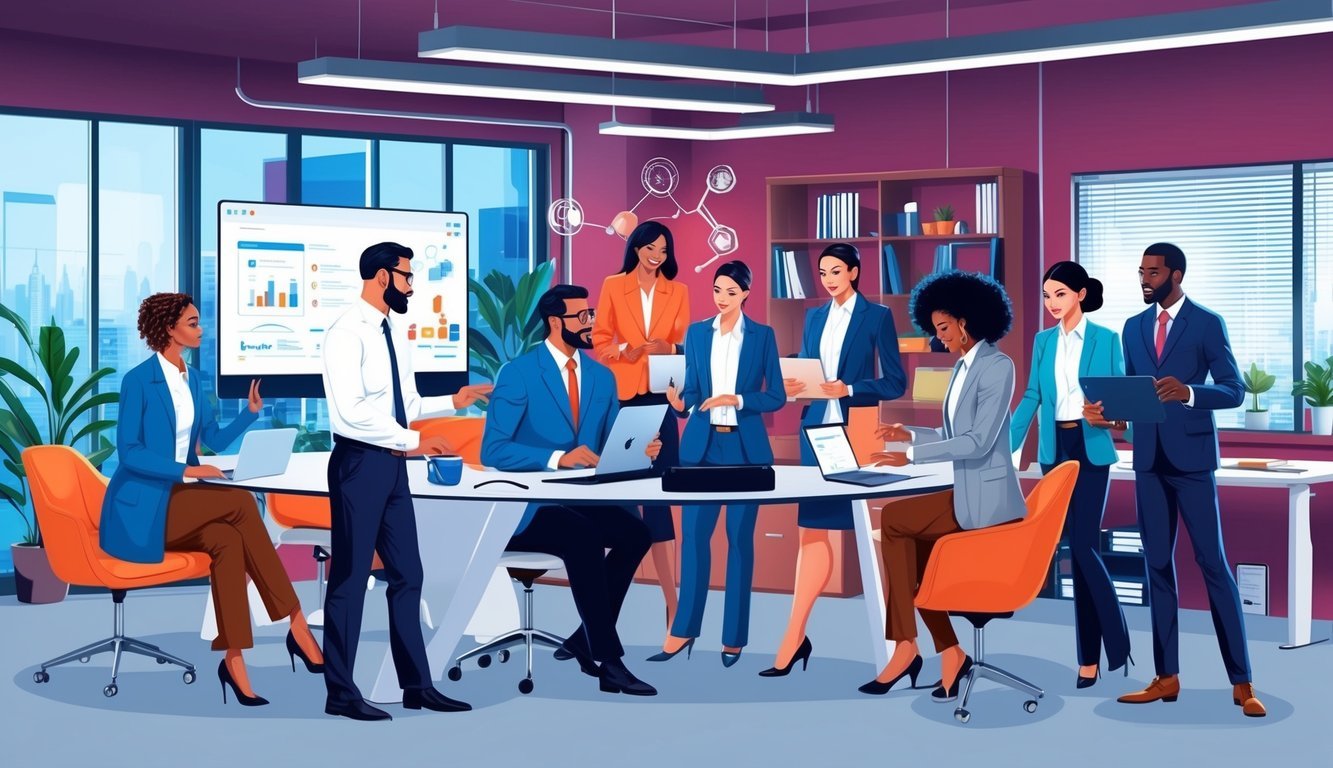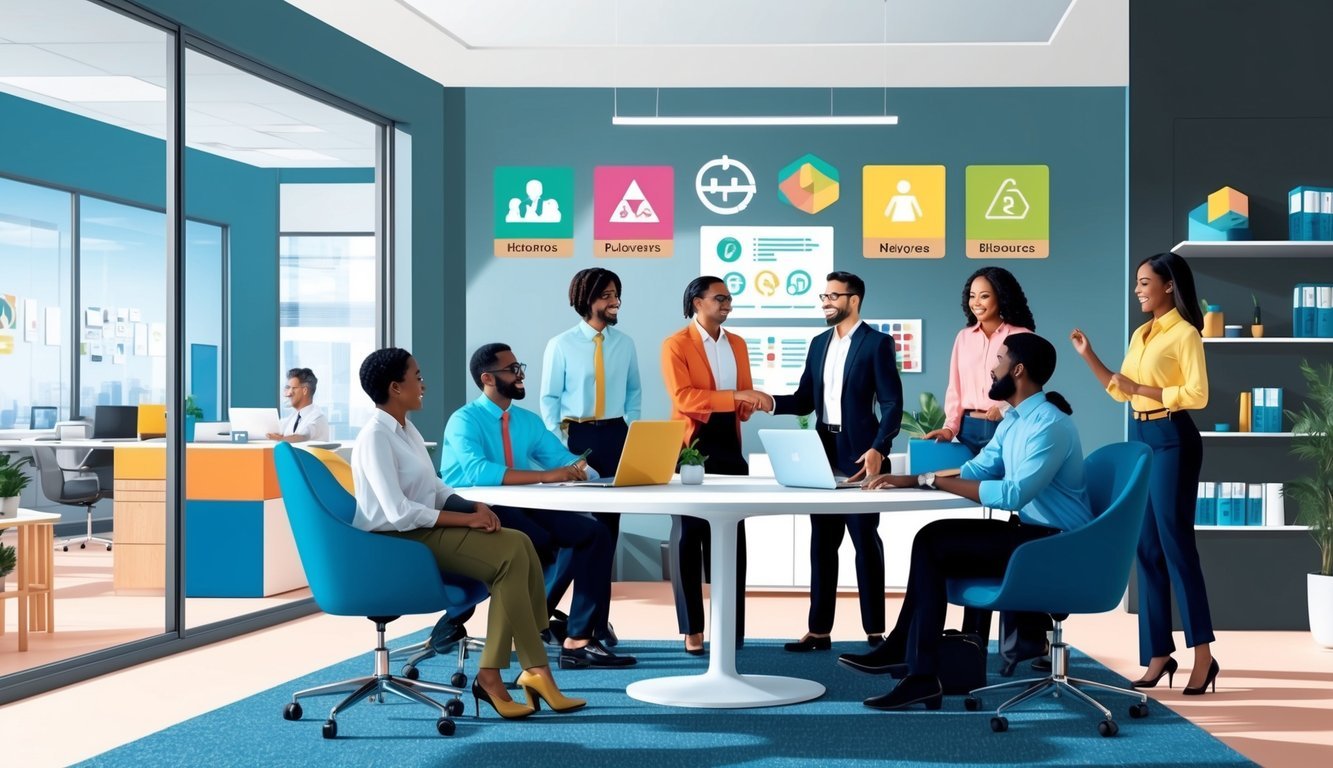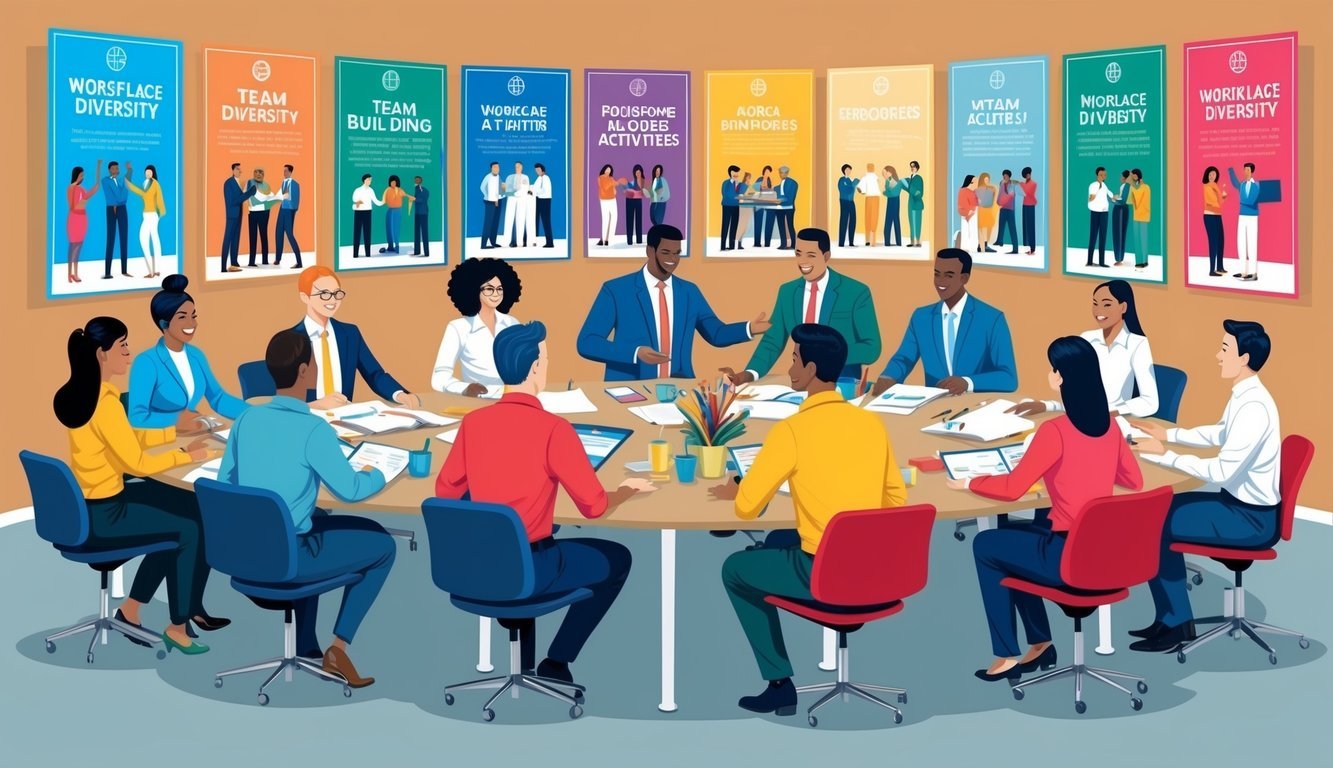Workplace diversity programs are picking up steam across companies in the US, and for good reason.
These initiatives aim to make work environments more inclusive and welcoming, embracing employees from all walks of life.
They’re not just about checking boxes; they help carve out a fairer, more representative workforce.
Diversity and inclusion efforts that genuinely make a difference can lift a company’s performance and boost employee satisfaction. Curious about which programs really pack a punch? Let’s dive into five standout workplace diversity programs that have been showing some impressive results.
1) Google’s Employee Resource Groups
At Google, Employee Resource Groups (ERGs) play a key role in their diversity initiatives.
These groups are like little communities where employees with shared backgrounds or experiences come together.
Whether you’re part of Women@Google or Trans at Google, these ERGs help build connections.
They are spaces to support each other and, believe it or not, they also influence company policies.
Sounds pretty smart, right?
Community partnerships are crucial to Google’s ERGs.
They collaborate with outside organizations to keep progressively growing.
Plus, they help run events like Transcend, focused on women of color at Google.
Joining an ERG isn’t just about networking; it’s a way to feel like you truly belong at work.
You can make friends, learn new things, and help promote inclusivity!
2) Microsoft’s Diversity & Inclusion Program
Microsoft has been at it for over 20 years when it comes to promoting diversity and inclusion, and they’re not slowing down.
Each year, they put out a Global Diversity & Inclusion Report, showing off their achievements and pinpointing areas for growth.
If you’re intrigued by their dedication to hiring diverse talent, you’re not alone.
They’re serious about welcoming people from various backgrounds, and that includes training to help employees grasp different perspectives.
From courses on unconscious bias to inclusive leadership, Microsoft wants to make sure everyone feels valued.
They even support employee resource groups that foster community and understanding among staff.
And it doesn’t stop at employees—the company works with partners and suppliers to amplify those diversity efforts across the board.
3) Johnson & Johnson’s Women in Science & Engineering Initiatives

Did you know Johnson & Johnson has been advocating for women in science since way back? Yep, for more than 100 years!
In 2015, they took it up a notch with their WiSTEM2D initiative.
This program sparks interest among girls and women in science, technology, engineering, math, manufacturing, and design.
Not just talk, either.
They provide real opportunities for women in STEM fields, including their jaw-dropping Graduate Scholars Program, where eligible women can score $150,000 to help fund their research, along with invaluable mentoring and resources.
They’re even planting the seeds early with programs aimed at inspiring young girls to discover STEM careers.
Johnson & Johnson knows that supporting women at every stage is essential for building a diverse workforce.
4) Apple’s Business Employee Resource Groups
Apple’s Diversity Network Associations (DNAs) are a cornerstone of their approach to workplace diversity.
These groups help employees connect and feel a sense of belonging.
If you’re looking to join, you’ll find DNAs focused on everything from women in tech to LGBTQ+ employees and cultural backgrounds.
Aside from hosting events, these groups also provide an excellent networking opportunity and play a part in shaping Apple’s products and policies, ensuring various perspectives get a voice.
And if you work at Apple, being part of a DNA could lead you to participate in exciting projects that promote equity and justice throughout the company.
It’s a great way to cultivate a more inclusive environment.
5) Netflix’s Inclusion & Diversity Strategies

Netflix is serious about diversity—they publish their diversity data every quarter to hold themselves accountable and track progress.
The streaming giant focuses on building diverse networks, partnering with niche sourcing organizations to tap into a wide pool of talent.
Women make up a significant piece of Netflix’s workforce, nearly reaching 50% in 2022! That’s impressive, right? They’re also committed to having diverse faces at the leadership level, with more than half of their directors and above being women.
Racial diversity is making leaps too, with Black staff numbers in the US rising from 3.8% in 2017 to 8% in 2021.
Their inclusion team has been laying the groundwork for a more inclusive culture, and the results are showing.
Understanding Workplace Diversity

Workplace diversity pulls together a mix of backgrounds, skills, and perspectives, enriching companies and helping them thrive in today’s diverse global marketplace.
Defining Diversity in the Workplace
Diversity in the workplace refers to having a blend of different groups.
This covers race, gender, age, religion, and much more—think education, work experience, and even ways of thinking.
Diversity and inclusion efforts aim to make every individual feel welcome, creating a fair atmosphere where all voices matter.
Examples of workplace diversity include:
- Having team members from various countries
- Employing people of different ages
- Including workers with disabilities
Diversity is more than skin deep.
It’s about celebrating each person’s unique contributions and ideas.
The Importance of Diverse Work Environments
Diverse workplaces aren’t just good for show—they’re good for business.
They spark creativity and enhance problem-solving.
When you bake in different viewpoints, you come up with fresh ideas faster.
Companies with robust diversity programs often fare better financially, plus they enjoy happier employees and more satisfied customers.
Sounds like a win-win, right?
Benefits of diverse workplaces include:
- New perspectives on projects
- Improved understanding of different markets
- Heightened innovation and creativity
Working alongside diverse colleagues makes the job more colorful and interesting.
You learn from each other every day, unlocking new ideas and exploring different cultures.
What’s not to love?
Best Practices for Implementing Diversity Programs

To make diversity programs successful, they require strong leadership support and a culture that invites everyone in.
These elements are key for creating lasting change within organizations.
Leadership Commitment to Diversity
It’s crucial for top leaders to genuinely care about diversity.
This isn’t just about talk; actions speak louder than words! You’ll want to see your CEO and other executives taking concrete steps.
They should champion diversity initiatives and set clear goals.
Leaders can:
- Participate in diversity training sessions
- Mentor underrepresented employees
- Advocate for diversity at company events
When leaders walk the walk, it inspires others to embrace diversity too.
Promoting Inclusive Culture
An inclusive workplace makes everyone feel appreciated.
You can help build this by:
- Hosting team-building events that celebrate differences
- Forming employee resource groups
- Offering flexible work options to accommodate everyone’s needs
Getting feedback from all employees is also vital.
Use surveys or focus groups to understand what’s working and what isn’t. Stay open to making changes based on feedback—you’ll be glad you did!
Remember, cultivating an inclusive culture is a journey, not a sprint.
Stick with it, and you’ll see positive changes in how everyone collaborates.
Frequently Asked Questions

Companies are rolling out some creative diversity programs these days, with top employers paving the way.
Training and resources are becoming more accessible than ever.
Let’s tackle some frequently asked questions about workplace diversity initiatives.
What’s the scoop on America’s Best Employers for Diversity this year?
Check out Forbes’ annual list of top diversity employers.
Companies like Salesforce, Marriott, and Mastercard often make the cut, thanks to their focus on inclusive hiring and creating welcoming environments.
What are the DEI programs that really knock it out of the park?
Google’s Employee Resource Groups are definitely doing well.
They unite employees with shared backgrounds.
Microsoft’s program boosts inclusive design in their products, while Johnson & Johnson is paving the way for women in STEM careers.
Any examples of diversity training programs that are truly impressive?
Apple’s Business Employee Resource Groups are making a significant impact.
They connect employees across the globe.
And Netflix is changing the game in entertainment with their focus on inclusive storytelling.
These strategies go beyond standard training to create actual change.
Where can I snag diversity and inclusion training materials that won’t break the bank?
You’ll be relieved to hear there are plenty of free resources online.
Check out LinkedIn Learning for courses on diversity.
The Society for Human Resource Management provides affordable materials too.
Local libraries typically have some great books on workplace inclusion.
What are the top-notch companies excelling in diversity and inclusion?
Look no further than tech giants like Google and Apple.
They’re constantly upping their game.
Johnson & Johnson is at the forefront in healthcare, and Netflix is leading the charge in entertainment.
These companies are setting the bar high for others.
What are the core principles that make workplace diversity programs effective?
Successful programs kick off with leadership backing and actively involve employees at all levels.
Clear goals and metrics matter, and regular training along with open lines of communication are essential.
The best programs also adapt based on feedback and results.

